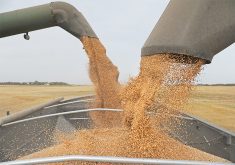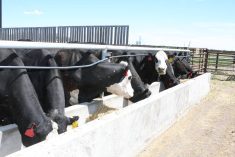THE United States heralds itself as a land of free traders but the realities of its trade policies prove otherwise.
The U.S. recently raised tariffs on Canadian spring wheat and durum to 10 and 12 percent respectively, aiming its considerable trade firepower squarely at the Canadian Wheat Board.
On this side of the border, two farm groups, while bemoaning the tariffs, grabbed the opportunity to condemn the CWB for causing the problem.
But the CWB’s monopoly on western grown wheat and barley exports is little more than a convenient lightning rod. The Canadian cattle and lumber industries, neither of which has an equivalent to the CWB, have also found themselves targets for U.S. trade harassment.
Read Also

Agriculture productivity can be increased with little or no cost
There’s a way to enhance agricultural productivity with little or no cost. It doesn’t even require a bunch of legislative changes.
Canadian cattle producers were hit with a 5.57 percent U.S. tariff in 1999. It was later rescinded, but it cost the Canadian cattle industry about $5 million to defend itself.
With that battle lost, the Americans embarked on another front. Today, Canadian cattle producers face U.S. legislation that would require mandatory country-of-origin labelling, which is expected to have effects similar to a border tariff because it could make Canadian product less appealing in the American marketplace.
As well, a 27 percent tariff continues to plague Canadian softwood lumber companies shipping to the U.S. The issue there focuses on low Canadian stumpage fees, which are paid to cut lumber on Canadian crown land.
Opponents of the tariff argue that Canada’s system is no cheaper once other expenses – covered by U.S. governments but not Canada or the provinces – are factored in.
Clearly, when American industries with a protectionist stance talk of a level playing field, they really mean their own playing field and their rules.
If the CWB was dismantled tomorrow, would the trade challenges stop? It seems more likely the U.S. would find something else to target.
The only recourse is for Canada to fight these trade harassments bilaterally and at all levels under the North American Free Trade Agreement and the World Trade Organization.
And we may soon have a chance to address the issues at the most basic level. All three NAFTA partners are expected next month to outline their goals for the next 10 years.
It is a chance for Canada to address key trade irritants and harassment issues, including the way penalties are assessed while a trade investigation is under way.
As well, priority must be given to developing a new definition for dumping. Products like wheat and cattle must be judged according to a system that recognizes they are sold based on world market prices, whether or not they are below the cost of production.














